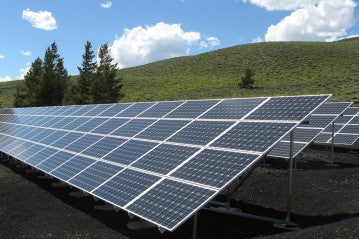
As the world continues to embrace renewable energy sources, solar power has gained significant popularity among homeowners and businesses alike. Investing in a solar system is not only environmentally friendly but also offers long-term cost savings. For customers considering a 3.5kW solar system, understanding its power production is crucial. In this blog post, we will explore the factors that affect power production, how to calculate energy output, and the required number of solar panels for a 3.5kW system.
Factors Affecting the Power Production of a 3.5kW Solar System
1. Sunlight Availability:
The availability of sunlight is a key factor that directly impacts the power production of a solar system. Areas with abundant sunshine tend to generate more electricity compared to regions with less sunlight. However, even in less sunny areas, solar systems can still produce a significant amount of power.
2. Geographical Location:
The geographical location plays a vital role in determining the power output of a solar system. Sunlight intensity varies based on the latitude and longitude of a location. Regions closer to the equator generally receive more direct sunlight, resulting in higher energy production. However, solar systems can still be effective in locations outside the equatorial belt.
3. Time of Year:
The time of year affects solar power generation due to variations in the length of daylight hours. In summer, when days are longer, solar systems have more exposure to sunlight, resulting in increased power production. Conversely, in winter, shorter daylight hours can reduce the energy output. It's important to consider these seasonal variations when estimating the power production of a solar system.
4. System Orientation:
The orientation of solar panels also influences power production. Ideally, solar panels should be installed facing south (in the northern hemisphere) or north (in the southern hemisphere) to maximize exposure to sunlight throughout the day. Proper system orientation ensures panels receive optimal sunlight, leading to higher energy yields.
5. Weather Conditions:
Weather conditions, such as clouds and shade, can impact the performance of solar systems. Cloudy or overcast days reduce the intensity of sunlight reaching the panels, resulting in lower power production. Similarly, shading from nearby trees or buildings can obstruct sunlight and decrease energy output. It's important to minimize shade when designing a solar system to maximize its efficiency.
6. Panel Efficiency and Degradation:
The efficiency of solar panels determines how effectively they convert sunlight into electricity. Higher efficiency panels can generate more power with the same amount of sunlight. Additionally, solar panels degrade over time, which can affect their energy production. It's crucial to consider the initial efficiency of the panels and their degradation rate when estimating the power output of a 3.5kW solar system.
How to Calculate the Energy Output of a 3.5kW Solar System
1. Determine the System Size:
A 3.5kW solar system indicates its peak power output under ideal conditions. To calculate energy output, consider the system's capacity factor, which represents the average power produced over time. Typically, a capacity factor of around 20% to 30% is used for solar systems.
2. Find the Peak Sunlight Hours:
Peak sunlight hours represent the number of hours in a day when sunlight is at its strongest. This information can be obtained from solar insolation data specific to your geographical location. Multiply the peak sunlight hours by the system size to determine the daily energy output.
3. Consider System Efficiency:
System efficiency includes losses from factors such as wiring, inverter efficiency, and temperature. Multiply the daily energy output by the system efficiency (expressed as a decimal) to calculate the effective energy output.
4. Calculate the Daily Energy Output:
Multiply the effective energy output by the capacity factor (expressed as a decimal) to obtain the daily energy output. For example, if the effective energy output is 12 kWh and the capacity factor is 0.25, the daily energy output would be 12 kWh * 0.25 = 3 kWh.
5. Calculate the Annual Energy Output:
To estimate the annual energy output, multiply the daily energy output by the number of days in a year. Continuing with the previous example, if the daily energy output is 3 kWh, the annual energy output would be 3 kWh * 365 days = 1095 kWh.
What Is the Required Number of Solar Panels for a 3.5 kW System?
The number of solar panels required for a 3.5kW system depends on the individual panel's wattage. Assuming you have 300W panels, divide the system size (3.5kW) by the panel wattage (300W) to determine the number of panels. In this case, you would need approximately 12 solar panels.
Conclusion
Understanding the power production of a 3.5kW solar system is essential when considering renewable energy options. Factors such as sunlight availability, geographical location, time of year, system orientation, weather conditions, panel efficiency, and degradation all impact the energy output. By following the calculation process outlined above, customers can estimate the daily and annual energy production of their solar system. Additionally, determining the required number of solar panels ensures efficient utilization of available space. Investing in a 3.5kW solar system empowers customers to harness clean and sustainable energy while reducing their reliance on traditional power sources.
Ecgsolax has been a key player over the last decade as demand for quality renewable energy solutions has been booming. We never stop innovating because we know how much clean energy means. At Ecgsolax, we offer a wide range of solar products, such as deep cycle batteries, all in one inverters, solar charge controllers, etc. Join us in creating a truly sustainable future!


0 comments